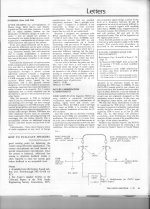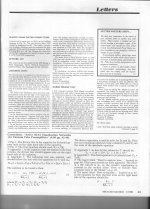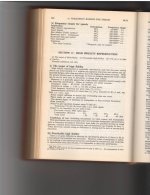Thanks Brad, Something just for us speaker designers then. On that Harmon speaker shuffler mechanism were all the speakers placed in identical positions when testing so the distance to back and side walls was consistent or was each speaker optimized for position?
I have always been warned to consider the sympathetic vibration from a secondary speaker in a room when doing any test analysis, that often makes me think about what Harman does to alleviate this problem, perhaps the speaker inputs are shorted but that doesn't do anything for the cavity resonances from a ported enclosure.
I have always been warned to consider the sympathetic vibration from a secondary speaker in a room when doing any test analysis, that often makes me think about what Harman does to alleviate this problem, perhaps the speaker inputs are shorted but that doesn't do anything for the cavity resonances from a ported enclosure.
There are probably papers about it, but the presented speaker (always a single channel as this is more revealing that a stereo pair) is brought to the identical centered position behind the curtain. The other units are kept a fair distance back in a row. The power amplifiers with zero input signals will constitute the equivalent of a short across the unselected loudspeakers, and I doubt that there is much concern about other resonances such as from ports.Thanks Brad, Something just for us speaker designers then. On that Harmon speaker shuffler mechanism were all the speakers placed in identical positions when testing so the distance to back and side walls was consistent or was each speaker optimized for position?
I have always been warned to consider the sympathetic vibration from a secondary speaker in a room when doing any test analysis, that often makes me think about what Harman does to alleviate this problem, perhaps the speaker inputs are shorted but that doesn't do anything for the cavity resonances from a ported enclosure.
If there were some significant effects, the speakers could be swapped around between trials, but I doubt that the effects are large enough to be confounding variables, given that loudspeakers have such wide variations.
Brad so along with the centered mono speaker is the testing also done only on axis or does the listener move about the room?
Comfy chairs with display and input.
John, because of testing like this, Harman found out what to improve, which they did. So now they are the best.
Last edited:
Apparently you missed the 40 years mark.
A small observation :
- the term 'science' is most frequently used by non-scientists
- the more often the use, the lesser the chance it's a scientist
- if it is a non-scientist who uses the word, the higher the odds it's an excuse to hide behind for lack of a veritable argument.
Seems to be an approach to eristics but whatever floats your boat.
The last one is interesting, but let´s see a typical sentence:
"That´s an astonishing comment given the fact that science knows that different test protocols rely on different mental processes and that the ABX format is more involving than, for example, an AB protocol."
The facts indeed are, that different test protocols rely on different mental processes and that the ABX-protocol is more involving than others.
You obviously missed the self-explanatory (at least i thought it was) conclusion/argument that therefore JC isn´t necessarily searching for excuses but is just having more difficulties with this test protocol.
Science was mentioned because the field of sensory tests is surprisingly complex but exists since ~18xx and a plethora of published material exists just to be widely ignored by people doing tests related to our discussions in this thread.
"Science knows" means just that researchers have done comparisons on A/B vs. ABX and the results were simply better in case of A/B hence the conclusion that the more "involving mental process" might lead to more difficulties for some humans.
DBT has been just about the only subject you've posted about in the last 9 years.
Sure. And that constitutes a problem or is particularly interesting because of....?
Its ok to not be able to tell similar spec'd amps or pre-amps apart. It is not a crime.
People buy equipment because it
1. They see an advert, a picture or a friend tells them about this awesome gear they saw. We could call this 'nascent product lust' or NPL for short.
2. They go and find the product. It sounds good - I'm sure a JC designed 400W Parasound amp is awesome paired with some B&W 802's
3. They like the way it looks. Polished aluminium, chrome, high quality printing, weight and feel - no different to an auto! It looks like an 'engineered' product.
4. As they hand over their money, the 'pride of ownership' thing kicks in: "**** it man, I actually have one of these things" is what they are thinking. Then there's the excitement that follows.
5. For the next two weeks, they get up early every morning, go down into the living room to look at it, stroke the dials, feel the heft, enjoy the quality of the thing, congratulate themselves on their purchase.
So, when you design a piece of audio gear, or a car, a chopper motorbike or anything that is going to sell for a few thousand $, this 1-5 above is what you are aiming to do for the customer.
ABX and DBT tests are a small part of it.
Well stated. And, ultimately, aren't we hoping to enjoy our stuff? Regardless of how we get there.
I do. there is plenty of room for improvement (including the room), but I listen to a lot of music when I'm not working.Well stated. And, ultimately, aren't we hoping to enjoy our stuff? Regardless of how we get there.
Yes, they don't put the listener's head in a vise. I suppose you might be permitted to walk around, but it's probably discouraged.Comfy chairs with display and input.
John, because of testing like this, Harman found out what to improve, which they did. So now they are the best.
Oddly I never have had the "experience" and haven't been back in the door since I was kicked out in 2004, after ten years of consulting, but Olive once tricked me into a test with a turntable presenting some cheap computer speakers. I might add that I never alleged to have any particularly great discriminative faculties, but he tends to delight in embarrassing people. We remain friends nonetheless.
I don't see the connection between useful and correct here unless the hypothesis is that everything sounds the same.
Although there are examples for wrong theories and incorrect experimental research that in the end led to new discoveries, usually experimenters try to gather correct data.
´Using a speaker with larger than normal impedance variation and 10 meter cables I would expect some to sound very different in direct ABX that information alone is not useful to me.
Would a (most likely) incorrect result (means no sound difference) be more useful?
If no experiment is needed, fine, but if an experiment is executed, then it should follow good scientific (
I case I have not been clear, I'm primarily interested in debunking inaccurate or fraudulent claims.
That´s what i thought.
Bob Carver did this years ago at Stereophile- matching his amp to a "reference" amp and supposedly they were indistinguishable. I'm sure someone here as the details. The core was matching the frequency response under load with the same source. As I remember (too lazy to dig it up) the reference was a tube amp and his was solid state. I think the long term result was a Carver tube amp- if that's what customers, want build it. The core of this is matching the response in the full system, including the source impedance.
Beside the experiment done, it is interesting that the Stereophile people followed during this event exactly the same routine as always.
Listened to the amplifiers and thought they were different, Carver modified his amp and thought he succeeded. The crew listended and said "nope", Carver modified again, the crew listened again and said "yes" .
Just sighted listening.
Here are two inputs on what I thought and put into print, based on my observations 35-40 years ago regarding double-blind ABX testing. (Blind testing is OK, still, in my opinion) I find it consistent with my present opinion on ABX testing.
Attachments
Here are two inputs on what I thought and put into print, based on my observations 35-40 years ago regarding double-blind ABX testing. (Blind testing is OK, still, in my opinion) I find it consistent with my present opinion on ABX testing.
Well I fully agree with you on the relative (un)importance of super-accurate RIAA response.
I will look up the TAA 1/80 report, I don't remember it.
Jan
Would a (most likely) incorrect result (means no sound difference) be more useful?
If no experiment is needed, fine, but if an experiment is executed, then it should follow good scientific () practice and therefore gather correct/useful data. Although it might not create something new a confirmation sometimes is good news too.
Fair enough, to outline a cable test the way I might like to do it would combine the Pear and Carver challenge. Take the $7000 speaker cable and have the challenge be pick an amp and speaker and let me take the cable and make a substitute out of stock Belden wire and maybe even a passive or two at the speaker end using any measurements I want.
As I said I was actually surprised at how low on the usual nonsense the Pear site was, but that being said even though triboelectric, DA, etc. effects are real I don't think they matter here. IMO the R/L/C/G, length matter and little else.
EDIT - Though DBT in this case
Last edited:
Here is the RDH. I think things have become a bit more stringent since.My understanding is that the broad parameters for high fidelity sound reproduction were established in the 1950s, and have not changed much since then. If I wanted to know the actual numbers I would use Google.
Attachments
Here are two inputs on what I thought and put into print, based on my observations 35-40 years ago regarding double-blind ABX testing. (Blind testing is OK, still, in my opinion) I find it consistent with my present opinion on ABX testing.
I just love epistemological archeology.
But John, how did the people in that era convince themselves that they indeed heard differences, without any sort of objective verification?
Good thing we're using those 1950s "standards" today.
That means all those early 1970s amps with the horrible TIM type problems are all going to sound "good" today?
And, so, regardless of which standards and criteria or testing method, which two or more amplifiers are going to NOT be distinguishable??
Waiting for that enumeration...
For example, maybe, at Harmon, it did not matter which amplifiers they used?
Of course out of their own, but then why would it matter if it was theirs or another brand?
I must say that on the surface the idea that behind some curtain if little computer speakers could sound indistinguishable from actually good quality speakers that maybe, just maybe it is possible that the best quality achievable in that test situation was on par with the cheap computer speakers?? Surely, that would explain the story told!
That means all those early 1970s amps with the horrible TIM type problems are all going to sound "good" today?
And, so, regardless of which standards and criteria or testing method, which two or more amplifiers are going to NOT be distinguishable??
Waiting for that enumeration...
For example, maybe, at Harmon, it did not matter which amplifiers they used?
Of course out of their own, but then why would it matter if it was theirs or another brand?
I must say that on the surface the idea that behind some curtain if little computer speakers could sound indistinguishable from actually good quality speakers that maybe, just maybe it is possible that the best quality achievable in that test situation was on par with the cheap computer speakers?? Surely, that would explain the story told!
I must say that on the surface the idea that behind some curtain ...
The presence of a curtain could be an issue, along with listener distance from the speakers. When mixing with near field monitors, it is usually done pretty close to speakers with any grill cloth removed. Also, the same grill cloth effect occurs when a scrim in used in a theater setting.
- Status
- Not open for further replies.
- Home
- Member Areas
- The Lounge
- John Curl's Blowtorch preamplifier part II


